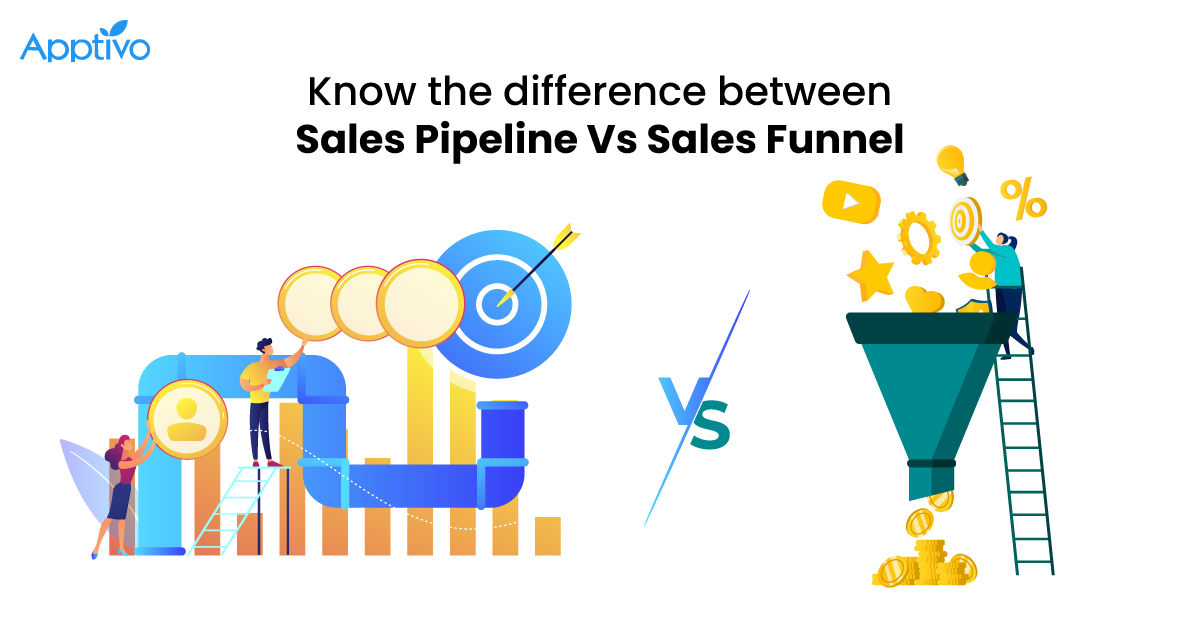 |
Companies across the world, irrespective of their industry type, often have a defined sales process. The concept of sales process came into existence after considering the redundancies faced by sales teams due to unstructured sales management. Imagine going through a number of follow-ups with a lead only to realize that the lead is not a right fit for your company. Hence, the rise in a competitive environment brought about new sales terms that made the work simplified for the sales teams.
It might seem like these sales terms and concepts are mere theoretical definitions. But, we should not forget that all theories are realized after proper analysis with proper proof and conclusions. This applies to sales concepts and definitions as well. The concept of sales pipelines and sales funnels are common sales terms that are normally discussed by teams to measure several metrics. However, people tend to get confused while understanding the difference between sales pipeline and funnel. In this blog, we have broken down the sales pipeline vs sales funnel concept in detail for better understanding.
Sales Funnel Vs Pipeline – An Absolute Guide
Business funnel and pipeline are two different processes. If you are using a sales pipeline and sales funnel to achieve the same goals, then you might have to double-check your strategy. However, both assist sales teams to improve their sales efficiency and increase the conversion rate.
Sales Pipeline Definition
A sales pipeline is defined as a series of stages that a prospect goes through as they become a customer. It is a visual representation of several prospects and their position in the sales stages. By integrating your workflow with the sales pipelines, you can easily obtain a picture of your prospects and their position in the sales process. In short, sales pipelines serve the purpose of sales teams by providing a window to introspect their sales strategy to move the prospects forward to become a customer.
Picture this sales pipeline example: You are running a SaaS business and you sell your software to clients on a subscription basis. When you get a new lead, your sales pipeline will include a stage of presentation where your salespeople will give an overview of your products and understand the prospect’s requirements. This is a typical example of a sales stage that the prospect moves through to convert into a customer. Likewise, a series of sales stages will together make up your sales pipeline depending on your business.
Sales Pipeline Stages
Apptivo CRM has detailed sales pipeline stages that help your sales teams to concentrate on progressing the prospects across the pipeline. In this section, we have discussed some of the common sales stages that are available by default in Apptivo. Additionally, you can also create new stages or modify the existing sales process according to your business purpose.
Prospecting – This is a discovery stage where leads discover your business through marketing. By utilizing social media, advertising, and other mediums of communication, you can strengthen the visibility of your business. Furthermore, you can use targeting parameters to find the right fit for your company.
Qualification – This is the stage where your sales representative and prospects get to know each other. Here, the sales representative can assess if the prospect is the right fit for your business and provide product materials like ebooks, articles, and webinars to offer a better understanding of your products and services.
Needs Analysis – This stage marks the critical part of the sales process. Here, your salespeople learn in detail the requirements of the prospects. Further, they can understand how your product or service can fill the gaps in their process. This is a systematic process that is carried out with proper evaluation.
Value Proposition – It is the stage that enables the salesperson to explain to the client why they should purchase your product or service. By utilizing powerful communication tools, salespeople can make a strong statement about your product or service and emphasis how this purchase can solve their problems.
Perception Analysis – The perception analysis stage in the sales process assists in weighing the perception of clients. Here, you have to weigh the reality against the expectations of the prospects. By doing so, your sales team can assess how much your product or service can meet the prospect’s expectations.
Identified Decision Makers – In this stage, you can identify the key decision-makers who will make the required decisions in completing the purchase. By researching the company and the key decision-makers, you can easily analyze the conversion rate for a particular prospect towards your business.
Proposal – Once the decision-makers are identified, you can create a case study on how your products can meet the demands of prospects. You can also put forth how your quote can meet the prospect’s requirements and provide more than the needs of the prospects. You can also mention how this will help them in the long run.
Closed Won/Lost – Depending on whether the deal is won or lost, you can move the prospect to the closed-won or closed lost stage. This helps to decide whether the prospect is converted into a customer or not.
From the above section, you can get an overview of the different sales stages available in the sales pipelines of Apptivo. Also, from these stages, you can determine the actions to be taken at a particular stage to move the prospect further across the pipeline.
Definition Of Sales Funnel
A sales funnel is a visual representation of the number of prospects across each sales stage and the conversion rate through each stage. True to its name, a sales funnel appears as a funnel where the top is wider as it marks the entry of prospects through the funnel and gets narrowed down. This is because most of the prospects get disqualified or dropped off as they move through the sales stages. While the sales pipeline has a company-centric approach, the sales funnel takes a customer-centric approach. A sales funnel gives insights on improving the efficiency of your sales teams.
Picture this sales funnel example: Your sales team uses several sales stages like discovery call, intent, purchase, and other stages. On analysis, you realize that the conversion rate is lower at the intent stage. So, you have to revisit the intent stage to understand the process, identify the faults in the process, and modify the sales strategy accordingly. The sales funnels help in this analysis process and identify the problems in your sales process thereby, improving the performance of your salespeople.
Sales Funnel Stages
Similar to sales pipeline stages, sales funnel stages also have a pivotal role in boosting the conversion rate. While the sales pipelines help to observe the actions taken by the sellers, the sales funnels assist in measuring the conversion rate.
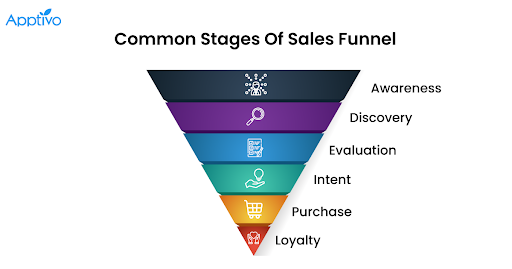 |
Let’s have a look at the different stages of sales funnels.
Awareness – In this stage, the prospects get to know about your company or business. Here, they come across your product or service for the first time. This occurrence happens through google search, social media, campaigns, advertisements, and other sources of communication. Notably, here they might look for a solution or come across your product.
Discovery – In the Discovery phase, the prospect gets a better knowledge of your company including your products and services. Here, they have developed an interest in your company and do more research on it. By using educational materials, you can make this work easier for the prospects, reach out to them better, and obtain greater brand visibility.
Evaluation: In this stage, prospects get a knowledge of your products and they look for competitors. After consideration and comparing with the competitors, the prospects shortlist their preferred options. As a next step, they look into the review sites and discuss with their peers to choose the right product or service.
Intent: It is at this stage where prospects reveal their intent to make a purchase. Here, they will also evaluate if your product or service is actually capable of meeting your requirement. They also check if it stands up to their allocated budget. After proper negotiation and handling of objections, a final proposal is chalked out.
Purchase: In this stage, the objective is attained and the prospect has moved forward with the purchase. But, this can be made better by providing a detailed onboarding process and making their transition smooth.
Loyalty: Just like how important it is to convert a prospect into a customer, it is equally important to make them your loyal customers. To achieve this, your sales and support team must continue offering exceptional service along with periodic follow-ups.
Conclusion
It is essential to understand the key parameters that help your business to stand out from the competitors. By incorporating sales funnels and sales pipelines into your sales strategy, you can obtain a complete perspective of your sales process and optimize your sales strategy to meet the business purpose. By focusing on the theoretical perspective of the sales cycle, you can identify the gaps in your business and boost up the efficiency of your teams.
Also, Read
- How do I create Sales Stages for Opportunities?
- How to change the Sales Stage name in Apptivo?
- How to disable a Sales Stage in Apptivo?
Latest Blogs
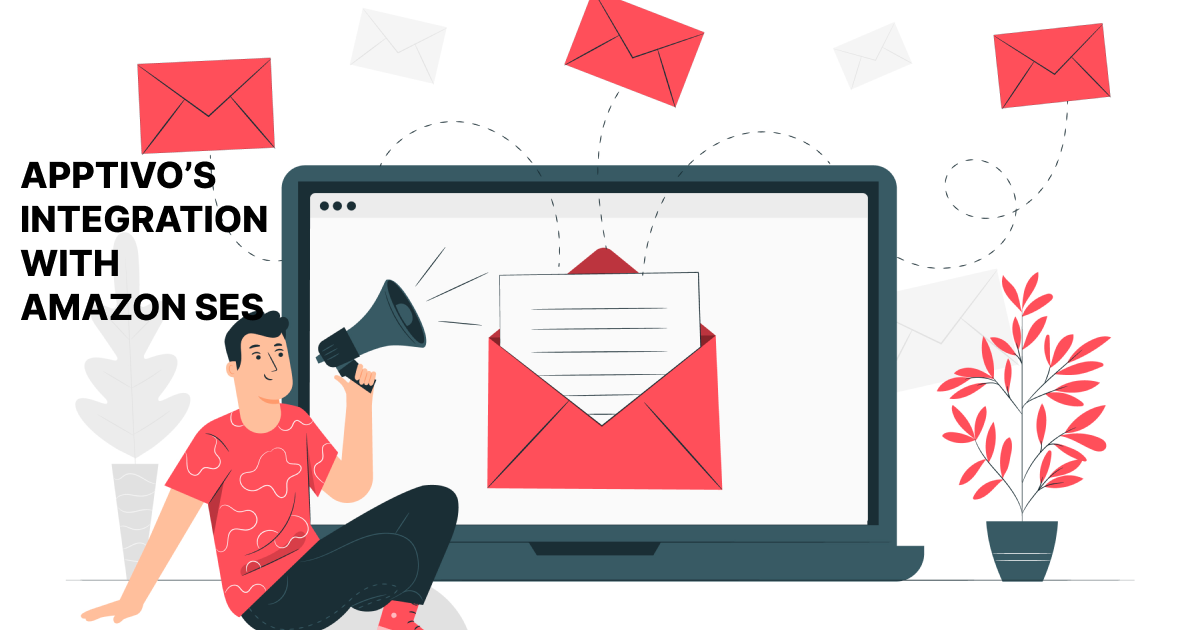
Apptivo's Integration with Amazon SES for Outgoing Email Server
Amazon Simple Email Service (SES) is an email platform that provides an easy, cost-effective way to send and receive email using your email addresses and domains. Apptivo has migrated its email service to Amazon SES (Simple Email Service) to enhance the performance and reliability of our email services
Read more →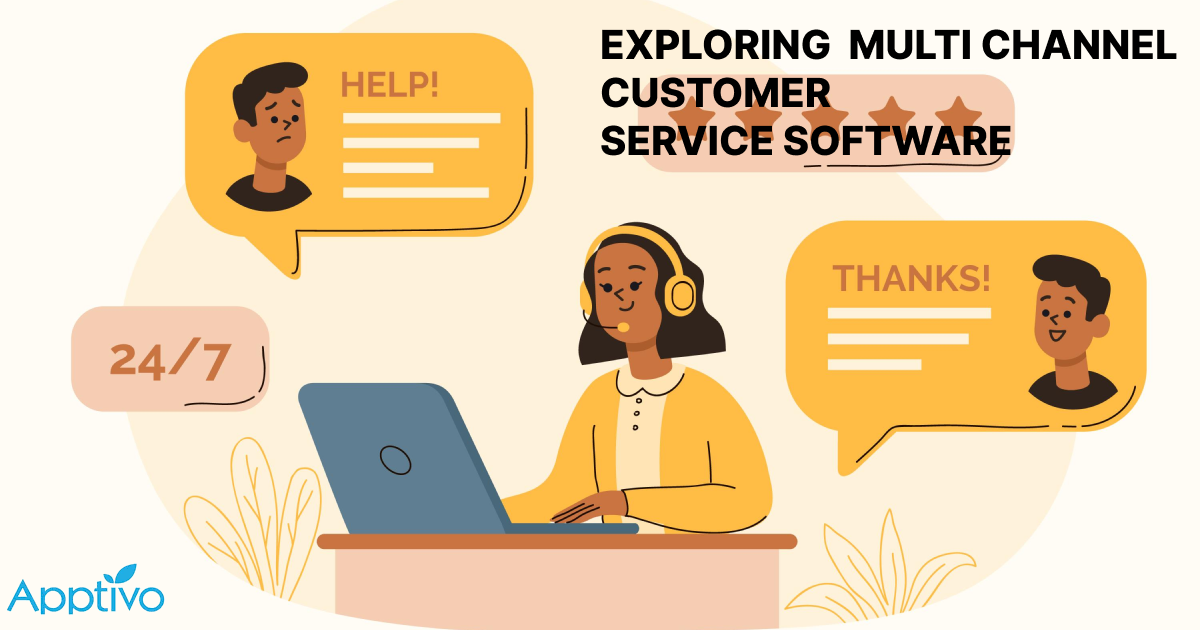
EXPLORING MULTI CHANNEL CUSTOMER SUPPORT SOFTWARE
1.What is customer service software? 2
Read more →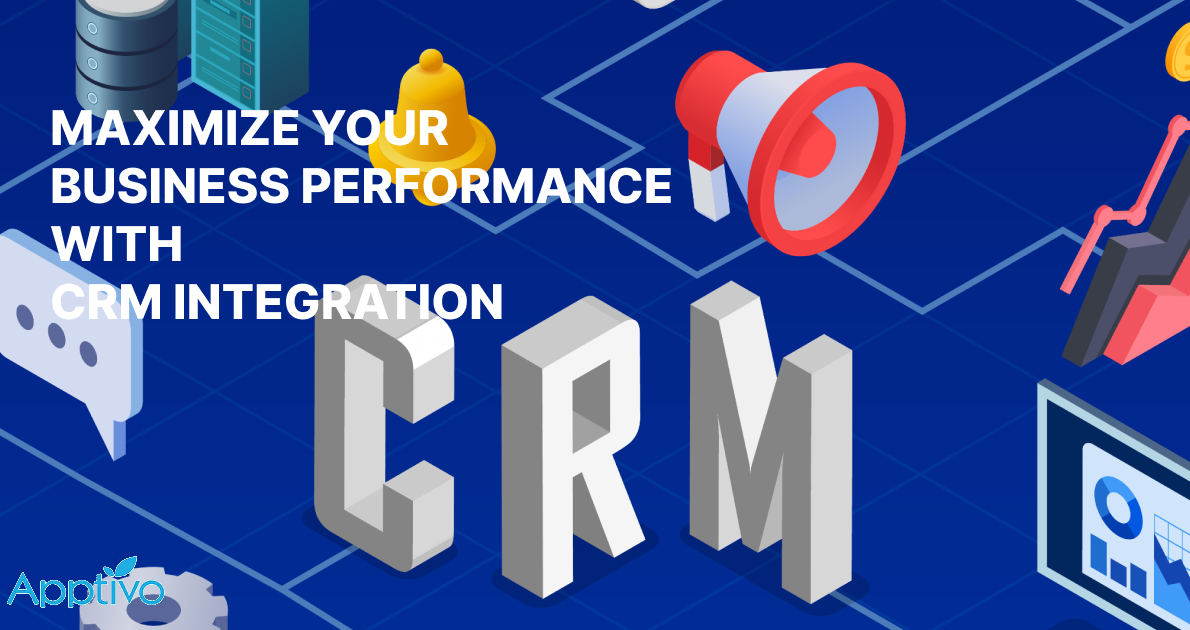
Maximize your business performance with seamless CRM Integration
1.What is CRM Integration? 2
Read more →
